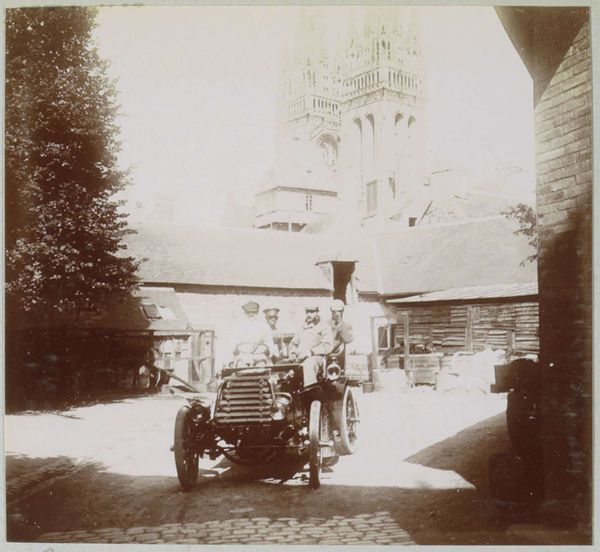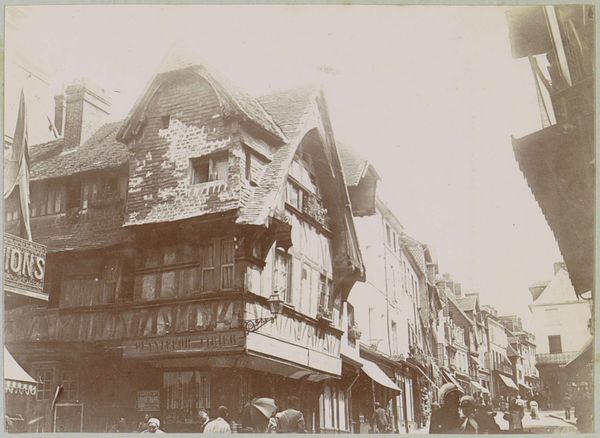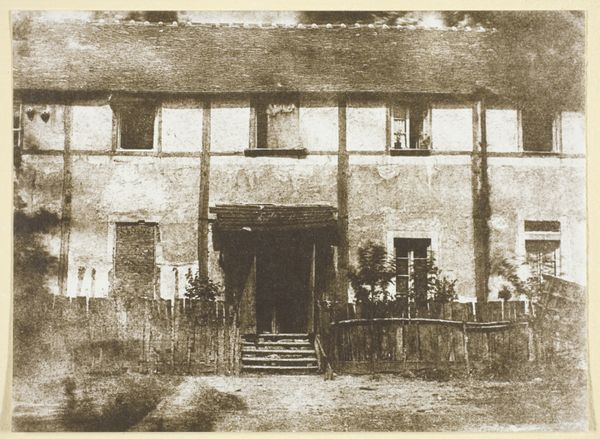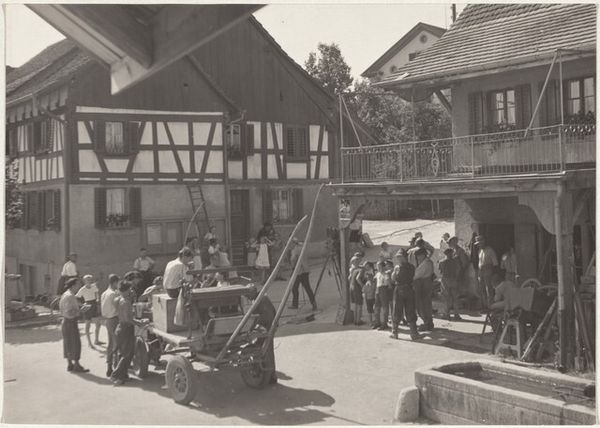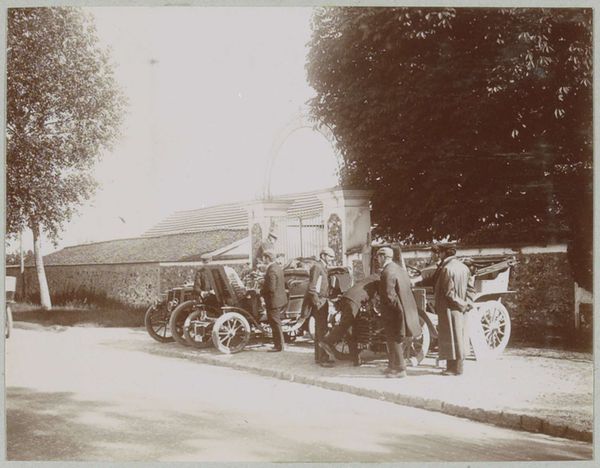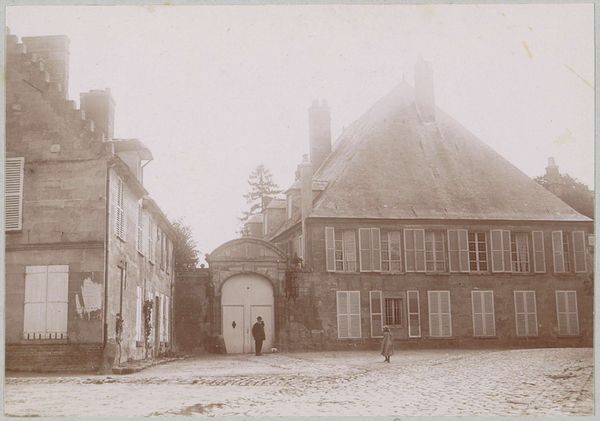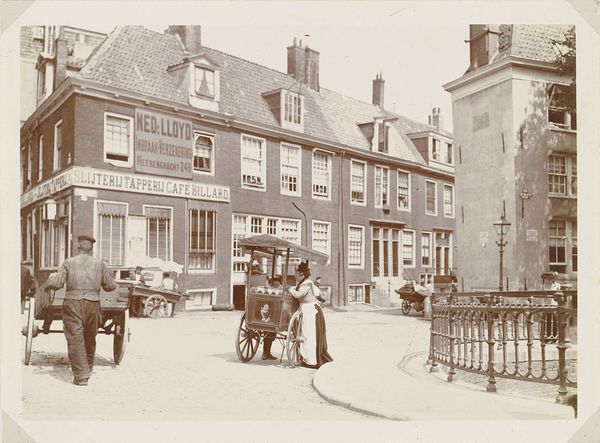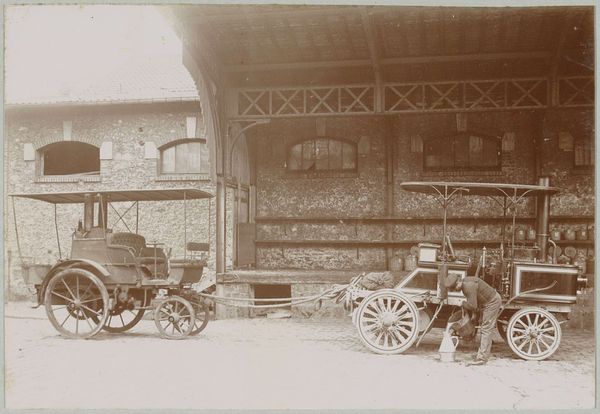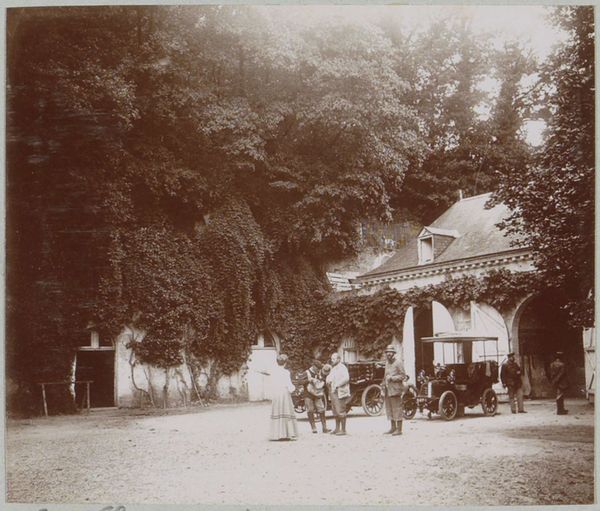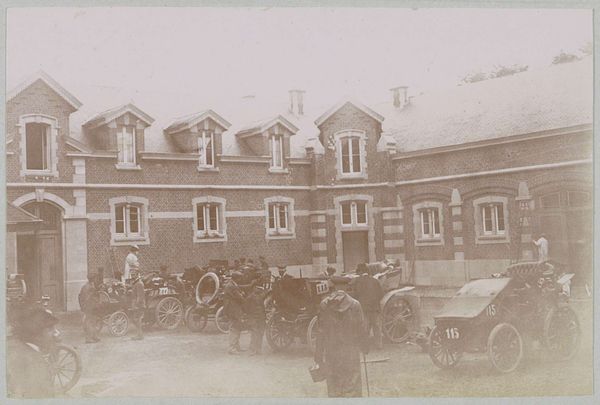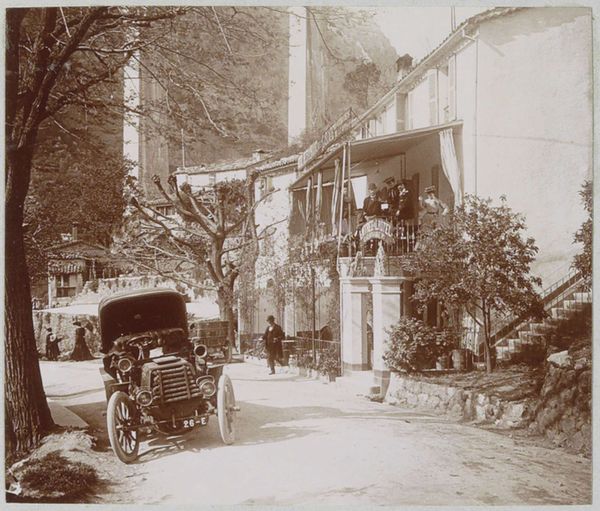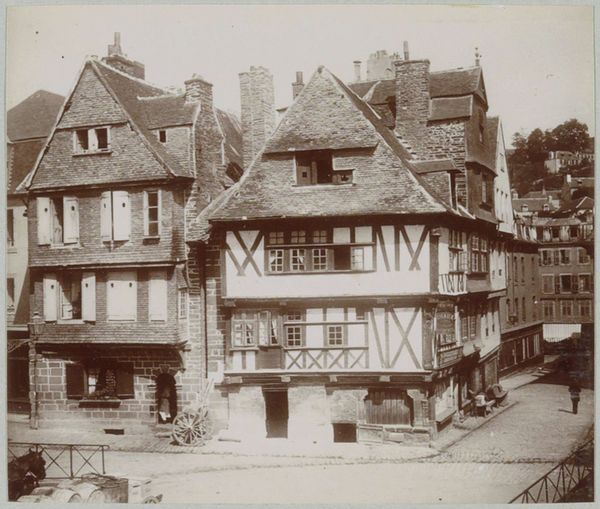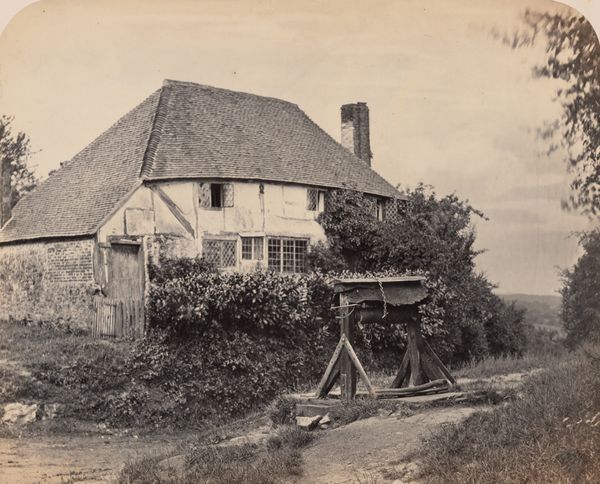
Automobiel geparkeerd op de binnenplaats van (vermoedelijk) een hotel in Beaumont-le-Roge 1898
0:00
0:00
delizy
Rijksmuseum
photography, albumen-print
#
landscape
#
photography
#
cityscape
#
genre-painting
#
albumen-print
Dimensions: height 80 mm, width 110 mm
Copyright: Rijks Museum: Open Domain
Curator: Alright, next up, we have a fascinating image, an albumen print attributed to Delizy, titled "Automobiel geparkeerd op de binnenplaats van (vermoedelijk) een hotel in Beaumont-le-Roge," created around 1898. It’s a genre scene set within a cityscape, capturing a moment in time. What grabs you about it? Editor: Well, right off the bat, it feels like a stage. That early automobile sits there almost as a prop, doesn’t it? Surrounded by those slightly ominous, weighty buildings. It’s oddly dreamlike, faded and timeless at the same time. It evokes the unease of a memory, a symbol that foreshadows so much change. Curator: Absolutely. That’s what I find so captivating. The very materiality of the albumen print adds to that faded, sepia-toned recollection. I read that the photograph aims to freeze a fleeting moment; a juxtaposition of old and new is shown via a charming hotel setting, likely Beaumont-le-Roge, encountering an automotive interloper. The automobile is the symbol of industry set to overwhelm older social hierarchies and traditional lifestyles. Editor: Beaumont-le-Roge... the very name suggests a crossroads of beauty and danger. The “rouge” hints at the fire of industry, doesn't it? Juxtaposed against this presumed hotel or manor, there's that collision between rural stability and disruptive modernity. Look closely – notice that the car has completely disrupted what was, a few moments earlier, the natural, calm quiet life in Beaumont-le-Roge. Also, think about how automobiles appear at the same time that psychiatry does...it must be linked to society's desire to tame inner conflict at a time of turmoil. Curator: I agree entirely. It's also a fascinating lens through which to consider class. Only certain echelons of society would have had access to such vehicles then, underlining the visual markers of emerging social strata. Editor: Precisely. The car serves as a potent signifier, announcing the arrival of a new order—one driven by industry and a craving to uproot established traditions. And think of the people who made these new changes, as captured on the plate – the chauffeur in control is one of them, so powerful as to become the literal “driver” of a new epoch. And even deeper – who did he displace as master of transport to be now the most critical individual? He surely held enormous, yet barely spoken, power. Curator: A poignant and fascinatingly uneasy image. It will continue to reveal subtleties and layers long after the surface level encounter. Editor: Definitely a reminder that progress often leaves ghosts in its wake. I'm now thinking how every era contains seeds of both triumph and impending sorrow. Thanks for pointing that out.
Comments
No comments
Be the first to comment and join the conversation on the ultimate creative platform.
